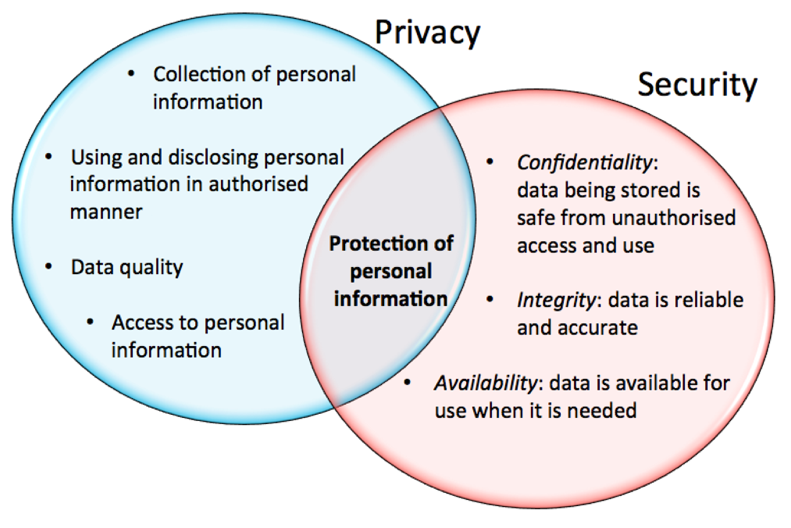Data Cyber Security: A Comprehensive Approach to Mitigating Digital Risks
Data Cyber Security: A Comprehensive Approach to Mitigating Digital Risks
Blog Article
How Information and Network Security Shields Against Arising Cyber Risks
In a period noted by the fast evolution of cyber threats, the relevance of data and network safety and security has actually never ever been a lot more noticable. Organizations are progressively reliant on sophisticated security measures such as encryption, gain access to controls, and aggressive tracking to protect their digital assets. As these risks end up being a lot more complicated, recognizing the interplay in between data safety and security and network defenses is necessary for minimizing risks. This discussion aims to check out the important elements that fortify an organization's cybersecurity posture and the techniques required to stay in advance of possible vulnerabilities. What remains to be seen, however, is just how these steps will develop despite future difficulties.
Comprehending Cyber Hazards

The ever-evolving nature of innovation continuously introduces brand-new vulnerabilities, making it imperative for stakeholders to continue to be attentive. Individuals may unknowingly come down with social engineering methods, where opponents adjust them into revealing delicate details. Organizations face unique obstacles, as cybercriminals usually target them to manipulate useful information or disrupt procedures.
In addition, the surge of the Web of Things (IoT) has broadened the assault surface area, as interconnected gadgets can act as entry factors for attackers. Identifying the value of robust cybersecurity practices is critical for reducing these threats. By fostering a detailed understanding of cyber companies, threats and individuals can apply reliable methods to guard their digital possessions, making certain strength despite an increasingly intricate danger landscape.
Trick Parts of Information Protection
Making sure information protection needs a diverse approach that encompasses different essential parts. One basic element is data file encryption, which transforms sensitive information right into an unreadable layout, accessible just to licensed users with the proper decryption tricks. This offers as a vital line of protection versus unauthorized access.
An additional vital element is access control, which regulates who can watch or adjust data. By applying rigorous user verification protocols and role-based access controls, organizations can minimize the danger of insider dangers and data breaches.

Additionally, information covering up methods can be utilized to secure delicate information while still permitting its use in non-production environments, such as testing and advancement. fft perimeter intrusion solutions.
Network Safety And Security Strategies
Carrying out durable network security techniques is crucial for protecting a company's electronic facilities. These techniques include a multi-layered technique that consists of both hardware and software remedies made to shield the stability, privacy, and schedule of information.
One vital element of network safety and security is the implementation of firewall programs, which work as an obstacle in between trusted inner networks and untrusted exterior networks. Firewall programs can be hardware-based, software-based, or a mix of both, and they assist filter inbound and outward bound website traffic based on predefined protection rules.
Additionally, intrusion discovery and avoidance systems (IDPS) play an important duty in checking network website traffic for questionable activities. These systems can inform managers to potential breaches and do something about it to reduce dangers in real-time. Regularly covering and updating software program is likewise important, as vulnerabilities can be manipulated by cybercriminals.
In addition, applying Virtual Private Networks (VPNs) makes certain protected remote access, encrypting data transmitted over public networks. Finally, segmenting networks can lower the assault surface area and include potential violations, restricting their effect on the overall facilities. By taking on these techniques, organizations can effectively fortify their networks versus emerging cyber risks.
Best Practices for Organizations
Developing finest techniques for organizations is vital in preserving a solid security position. A detailed strategy to data and network safety starts with routine danger analyses to identify vulnerabilities and potential dangers. Organizations ought to apply robust accessibility controls, making sure that only accredited workers can access sensitive information and systems. Multi-factor verification (MFA) must be a basic need to boost protection layers.
Additionally, continuous employee training and recognition programs are crucial. Staff members ought to be enlightened on acknowledging phishing efforts, social design techniques, and the significance of sticking to safety protocols. Routine updates and patch administration for software program and systems are likewise click here now crucial to shield against understood vulnerabilities.
Organizations need to develop and evaluate event feedback plans to make sure readiness for prospective violations. This consists of developing clear communication channels and have a peek at this website duties throughout a safety incident. Moreover, information security should be utilized both at remainder and in transit to protect delicate details.
Finally, carrying out routine audits and conformity checks will certainly assist make sure adherence to pertinent laws and established policies - fft perimeter intrusion solutions. By complying with these finest techniques, companies can significantly enhance their resilience against emerging cyber risks and secure their critical assets
Future Trends in Cybersecurity
As organizations navigate a progressively complicated digital landscape, the future of cybersecurity is poised to develop substantially, driven by arising innovations and moving risk paradigms. One prominent fad is the integration of expert system (AI) and artificial intelligence (ML) right into protection structures, permitting real-time danger detection and feedback automation. These technologies can examine huge amounts of information to recognize abnormalities and possible violations much more efficiently than traditional approaches.
One more important pattern is the rise of zero-trust style, which needs continuous confirmation of individual identities and tool protection, no matter their location. This strategy reduces the risk of expert risks and boosts security against exterior attacks.
Furthermore, the boosting adoption of cloud solutions necessitates durable cloud safety and security techniques that deal with one-of-a-kind vulnerabilities related to cloud atmospheres. As remote job ends up being a permanent component, securing endpoints will also come to be critical, bring about an elevated concentrate on endpoint discovery and response (EDR) solutions.
Lastly, regulative conformity will proceed to form cybersecurity practices, pressing companies to adopt extra strict information defense measures. Accepting these fads will be necessary for organizations to strengthen their defenses and browse the evolving landscape of cyber risks properly.
Final Thought
In verdict, the execution of durable information and network safety actions is necessary for organizations to secure versus arising cyber hazards. By making use of encryption, access control, and effective network safety and security techniques, organizations can advice considerably decrease vulnerabilities and protect sensitive information. Adopting best techniques better boosts durability, preparing organizations to face advancing cyber obstacles. As cybersecurity proceeds to progress, staying informed concerning future fads will certainly be vital in preserving a strong protection versus prospective threats.
In an era noted by the rapid development of cyber hazards, the value of data and network protection has never ever been much more obvious. As these risks come to be a lot more complicated, understanding the interaction between information security and network defenses is necessary for reducing threats. Cyber threats incorporate a broad array of malicious activities intended at compromising the discretion, integrity, and accessibility of networks and data. An extensive strategy to data and network protection starts with regular danger analyses to identify vulnerabilities and prospective hazards.In conclusion, the application of robust information and network safety actions is important for companies to protect versus emerging cyber dangers.
Report this page